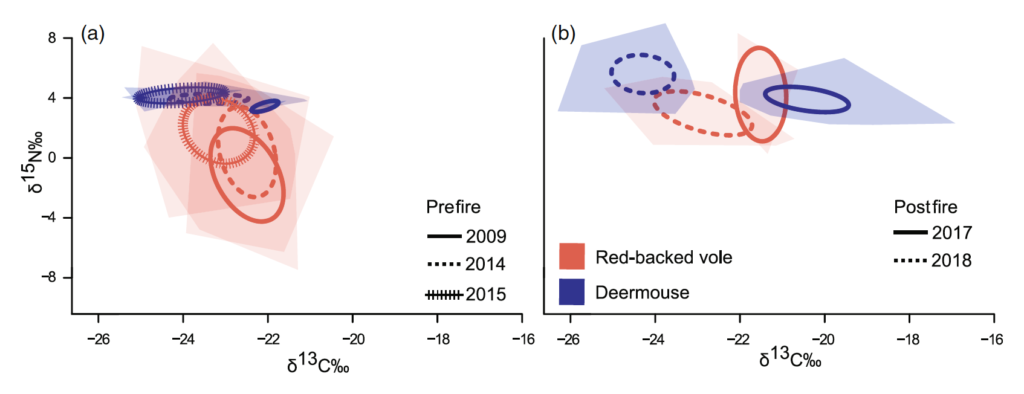May of the projects in my lab group use museum specimens to gain a deeper understanding of the changes taking place in the Anthropocene. The Anthropocene—the geological epoch defined by the profound impact of human activities on the planet—is marked by rapid alterations to habitats, temperature, precipitation patterns, and fire regimes. By examining specimens or the data from specimens we can better understand how these changes have affected existing species and shaped the biosphere. These studies provide critical insights into the impact of human activities and can inform decisions on how to manage and preserve the environment for future generations. As an invaluable historical record of species and ecosystems, museum specimens help us understand the incredible diversity and complexity of life on Earth and highlight the consequences of losing species and habitats.

One prime example of this phenomenon is the shift between red-backed voles and deermice in North America. Voles are known to dominate in old-growth pine forests, but wildfires can lead to their replacement by deermice. As the forest matures, the dominance shifts back to voles. In a recent study, master’s student Addison Allen used stable isotopes from museum specimens, combined with mammal trapping data, to demonstrate that competitive release plays a role in this species replacement dynamic. Predicting range shifts of organisms in the future requires an understanding of both habitat preferences and behavioral traits, such as competitive advantage.
